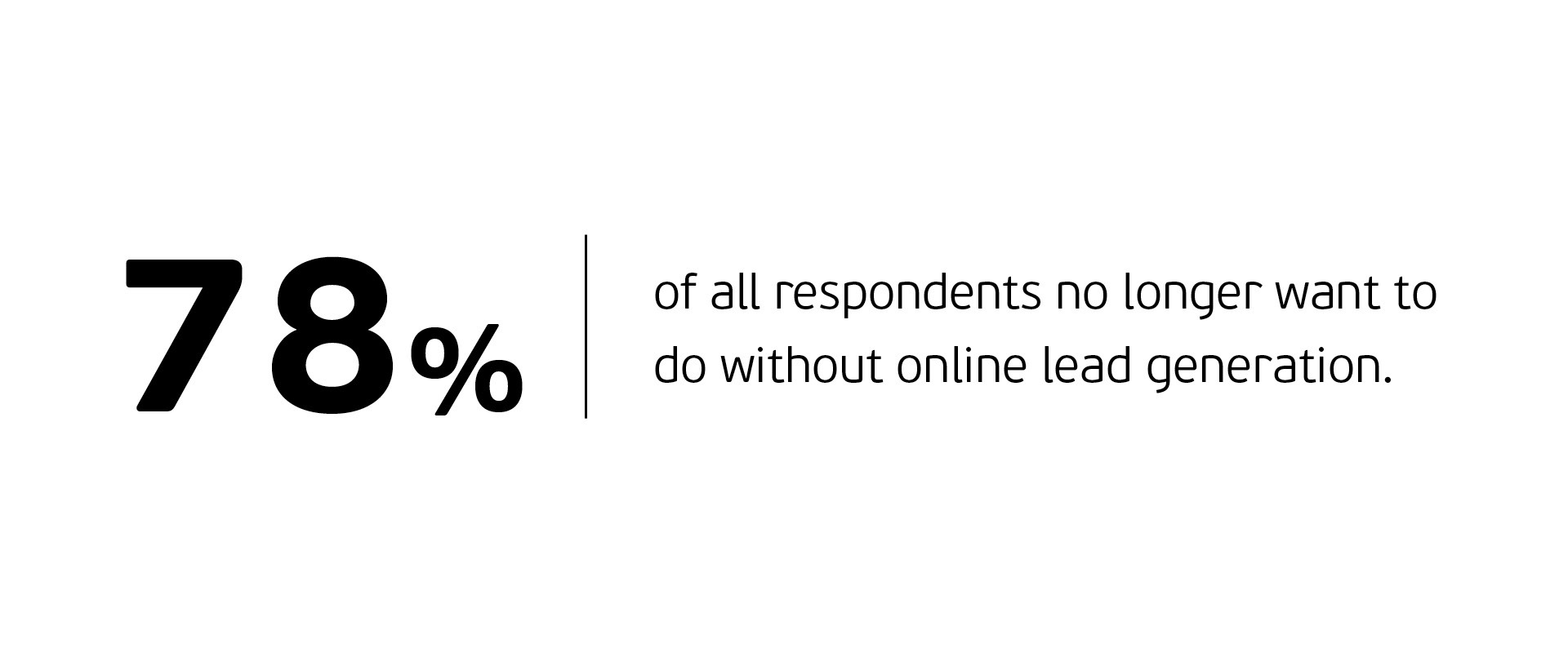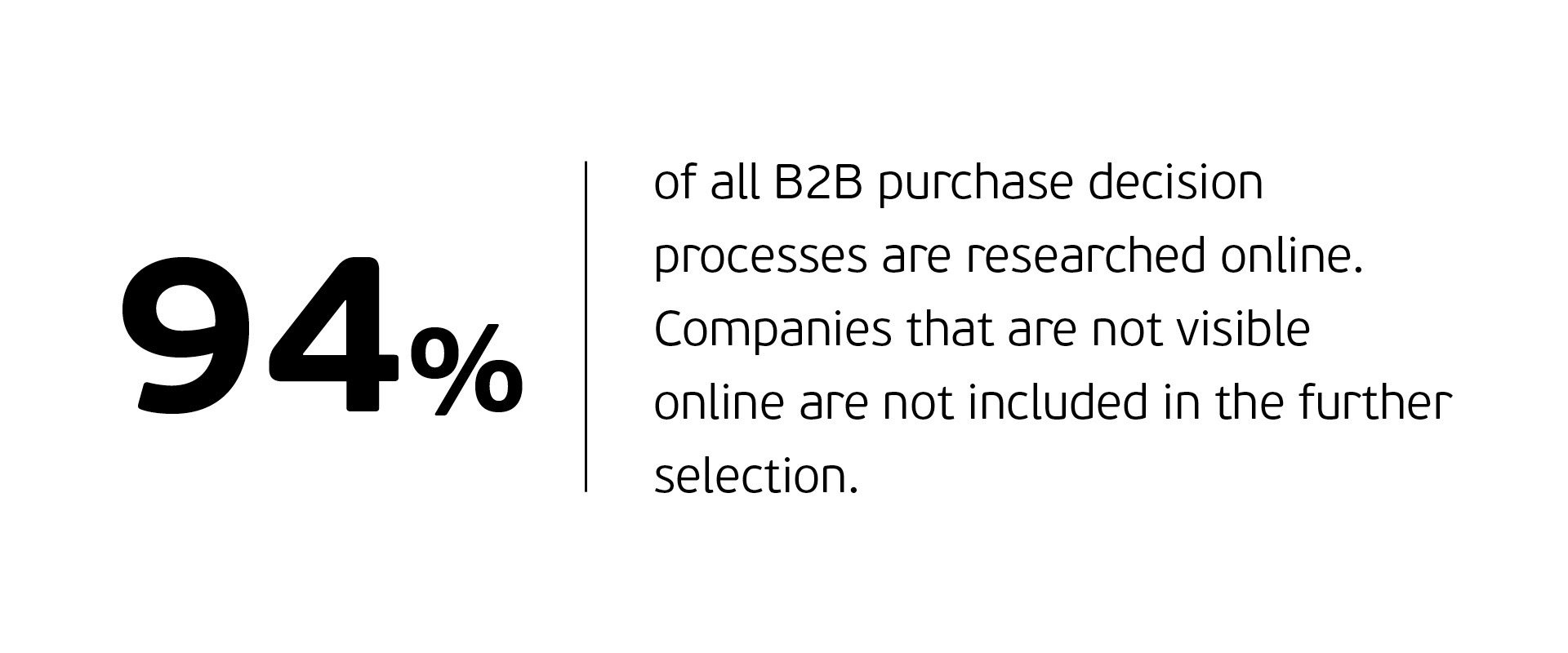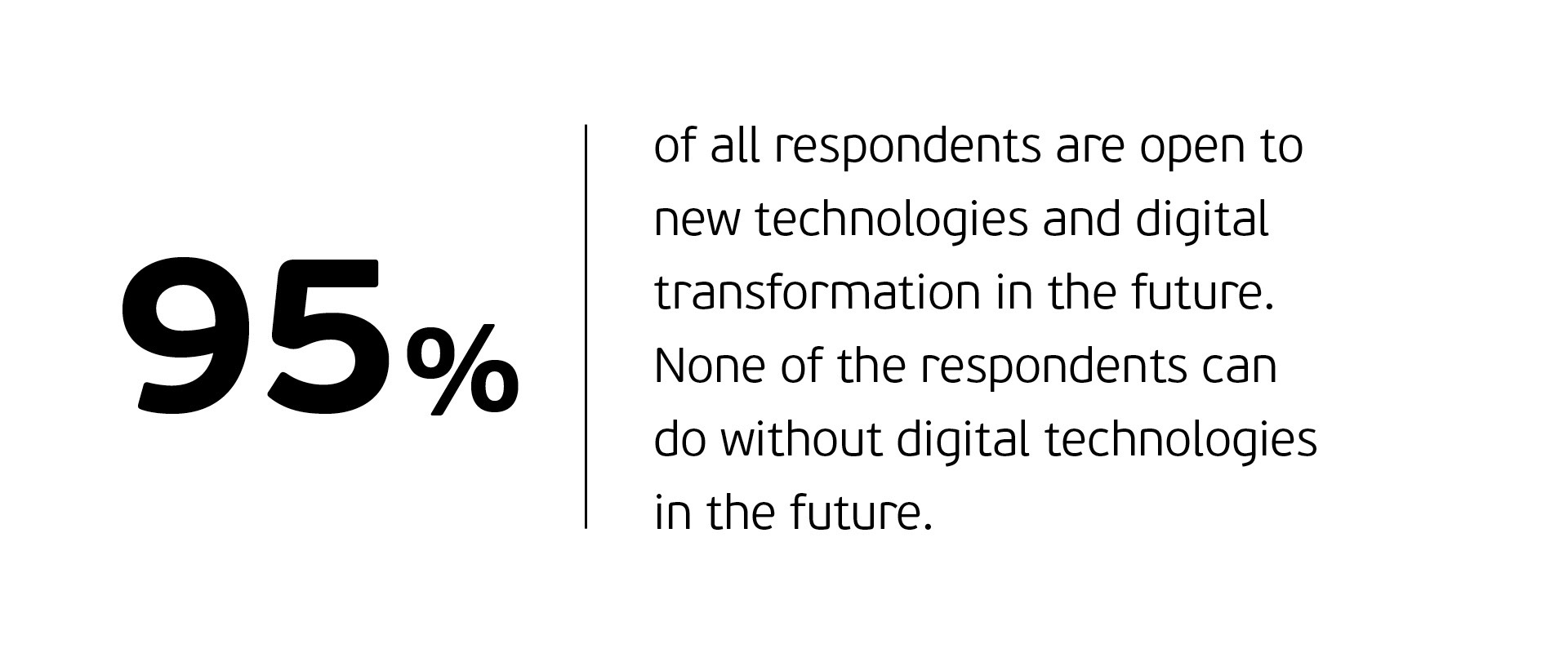

When it comes to lead generation, companies are always racking their brains: How do we approach potential contacts, how do we get them excited about our products and services? And how do we do all that without personal contact? Digitalization as a solution approach presented B2B companies with challenges not only during Corona.
Especially when virtual marketing ideas have received only marginal attention in recent years, the question remains explosive beyond the pandemic: How can companies align themselves with tomorrow and optimize their B2B marketing in the digital transformation?
Presenting oneself at trade shows, giving technical presentations, conducting sales talks, visiting customers - those were the days. What had been part of the standard repertoire of marketing and sales departments in large B2B companies for decades became obsolete from one day to the next. Personal contacts were reduced to a minimum, even in business, and exchanges and contacts became more difficult than ever before.

Digitalization was therefore the keyword, which was already omnipresent before Corona and gained new momentum as a result of the pandemic. Those who were not yet digital had to become so as quickly as possible. But many companies had to experience firsthand that this is often not so easy. How can traditional appointments and events that have been tried and tested over many years be efficiently moved to the web? What tools are needed to be successful? What costs does this entail in already challenging economic times?
Questions like these had to be answered quickly in order to continue to operate in the market. The pandemic served as a fire accelerator, so to speak, for the digital transformation of companies - this is also shown by a recent study by bvik, the German Association for Industrial Communication. The survey, "Digitalization Push 2020 in B2B Marketing" makes it clear that the digital changes resulting from the crisis have had a strong to very strong impact on the company for almost 60 percent of respondents. Above all, companies that were already digitally affine in pre-pandemic times have pushed ahead with digitization, but there has also been an increase in awareness of digital topics and tools in companies that are weren’t strongly interested in being digitalized.
While start-ups or small, innovative companies have long been exploring the possibilities of digitization, large, traditional industrial companies often still have difficulties with the rapidly changing requirements of a digital world. This must change - because in the B2B sector in particular, buying behavior is shifting more and more from offline to online.

B2B buyers are more likely to trust their own online research than the statements of salespeople in the purchase decision process. Information is obtained online in advance for 94 percent of all B2B purchasing decisions, and 74 percent of people begin their online research with an organic Google search. Forbes already expected around 50 percent of B2B buyers' purchases to be made online last year without the intervention of a single sales representative.
This shows how important SEO - i.e. search engine optimization - already is these days, even in the B2B sector. In order to survive in the market, companies should make it essential for their products and services to be digitally discoverable and experienceable. But this is precisely where the problem lies. Many industrial companies often find digitization very difficult. Whether it's SEO, the use of banners, the proper use of social media channels, or simply the clean setup of a website and newsletter, in many places there is a lot of potential that remains untapped.
There are many reasons for this - some of it is simply a lack of knowledge about what successful digital marketing strategies can look like. Many companies lack experience in dealing with digital advertising channels such as Google Ads, some also have too little understanding of how purchasing decision behavior has changed and still rely too much on long-established measures such as trade shows or print advertising. Many also think in silos and don't take to heart that all channels are interrelated these days. And then, of course, there is the lack of resources - both in terms of personnel and budget - which often make successful digital marketing difficult. Of course, the fact that the pandemic meant that action had to be taken very quickly doesn't make things any easier.
SPS MARKETING was already fully committed to digital transformation before Corona. With Thomas Catulli, an expert was brought on board who has been active in the digital sector since 1996. "Together, we want to help our customers reach their target group with a wide reach and successfully increase their sales," explains Tamara Grünzweil. The communications expert is a member of the management team at SPS MARKETING, one of Europe's leading B2B agencies. With offices in Linz and Stuttgart, the marketing agency has already accompanied industrial companies on their way to a successful future.
It can certainly pay off to work with specialists in the respective fields and to draw on specialized knowledge, because the requirements have become much more complex. Studies show that today's B2B sales process takes around 22 percent more time than it did five years ago.
But before products or services can even be sold, contacts are needed - so how do companies even find their so-called "leads" in the digital age? Basically, lead generation involves arousing the interest of potential customers in a targeted manner: the target group is analyzed thoroughly in advance and then addressed with tailored measures. By expressing interest in the content provided - and leaving their contact details in return - potential customers voluntarily enter into a relationship with the company.
Through further marketing measures, this relationship can be strengthened until, at a certain point, sales takes over and a sales initiation starts.
"We see the great advantage of so-called 'pull marketing' in the fact that companies don't have to badger their customers. By performing a targeted analysis of customer needs up front, we can provide high-quality content and solutions that attract the target audience on their own. Of course, lead generation can look different from company to company and take different amounts of time. However, once the sales force steps in, it must be guaranteed that someone is actually interested in the products or services in question. We therefore have to ensure that this information is collected in a targeted manner as part of the process," says Grünzweil, briefly summarizing the key points of the strategy.
"On the customer side, measurable campaign goals also offer the advantage that budgets can be easily argued for - transparency is the buzzword that can also be used to get the business floor excited about a new marketing campaign."
The be-all and end-all of any successful online approach: the right technology. It needs the right systems and monitoring tools to be able to play out content in a targeted manner. "We like to work with up-to-the-minute data, as it shows what works and what doesn't. We can precisely measure whether our content is seen by exactly those people who should actually be addressed. Fine-tuning and adjustments are possible at any time, and we can react flexibly to new situations," explains Grünzweil.
Once the technical prerequisites are in place, the next step is to define so-called "buying personas" - typical representatives of the company's own target group who are to be addressed by the campaign. The personas help to find the right channels.
"By picturing a 35-year-old young manager, for example, and describing his life and preferences, we realize that we can reach him well via Spotify or news forums, for example, but probably not via radio or TV ads. We have to keep asking ourselves how we can best connect touchpoints and target audience. It's not about picking one channel - nowadays everything is connected, we have to try to reach people in as many ways as possible," Grünzweil emphasizes.

In doing so, it is important to adapt the content to the respective channel. Because even if the message ends up being the same - Instagram works on a completely different level than YouTube or LinkedIn.
Once the target group is known, a corresponding story must be developed for them. Here, it is important to consider all the details and address the users directly. When buying a product, some are primarily interested in the price, some focus on the design, and still others are primarily looking for a practical solution. By showing individuals exactly what information they are looking for, they feel their needs are taken seriously - and are more likely to buy.
"We try to understand our personas precisely. If they book a flight to Zurich, for example, the next step is to try to make them feel comfortable with a hotel room or a rental car in the city. This should not be done with a sledgehammer, but by analyzing our users' behavior in detail, we can make a good assessment of what they need or what they would respond to," says Grünzweil.
For each client and each campaign, SPS MARKETING develops its own playbook, a clear script that shows exactly which content is played out where and when, and how to react to both good and bad click rates. Actions that work well and generate a particularly large number of clicks are also used at the next stage of the campaign, while others are discarded.
"Digital is also about constant learning. We can easily try things out, be a bit more courageous. If it works, fine, if not, not much is lost. We get to know our target group better and better and can serve them more and more precisely over time," says the communications expert.
Whether banners, blog posts, videos, animations - messages can be prepared in the most diverse ways again and again. In the agency the possibilities are nearly boundless; "On the one hand we can present content on our customers’ websites interestingly or embed it entertainingly into newsletters or create a teaser in the form of a banner. We make sure that cross-media contents interacts with each other and that we reach the target group in the best possible way."

The participants in the bvik digitalization study also know how important such a new approach is: 95 percent of all respondents are open to new technologies and digital transformation. None of the respondents can get by without digital technologies in the future. "We see figures like these as our mission," Grünzweil emphasizes. "Our promise at SPS MARKETING is that we are 'Forming B2B Futures' for a reason - and we clearly see this future in the digital realm."
Pandemics may come and (hopefully) go - but the opportunities opened by challenges like these will remain. And can be a key part of a successful business strategy in the future.
Do you want to make skillful use of your company's online potential in the future? SPS MARKETING will tailor a digital strategy to fit your needs. Feel free to contact me for a no-obligation consultation.
